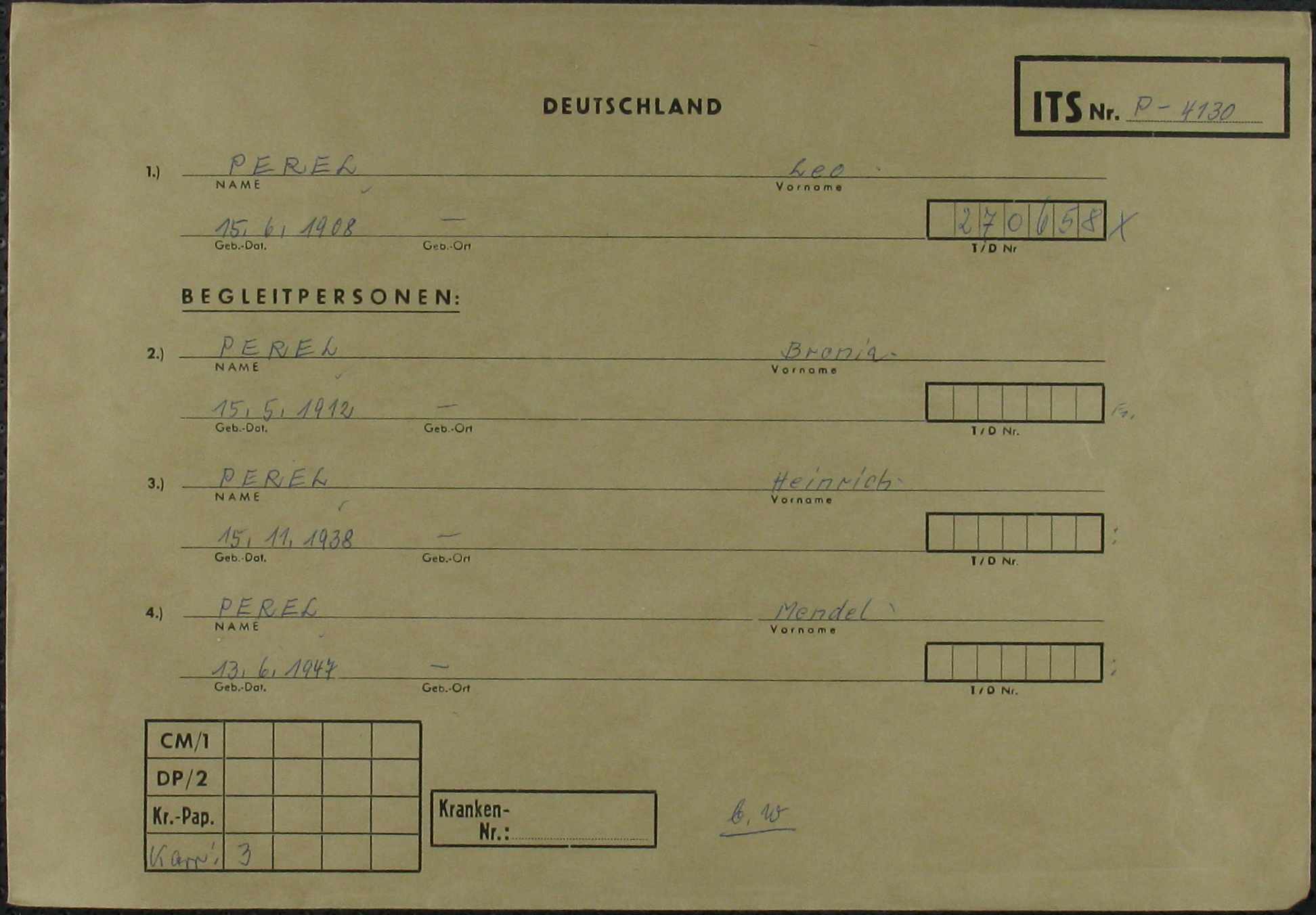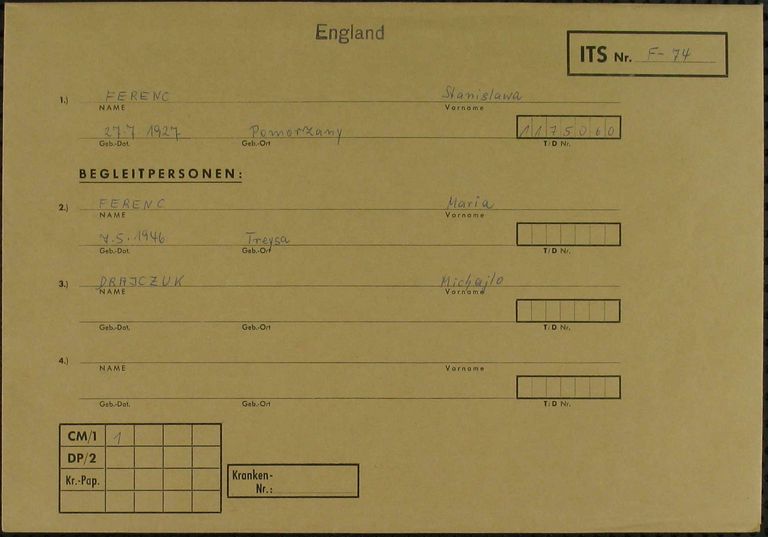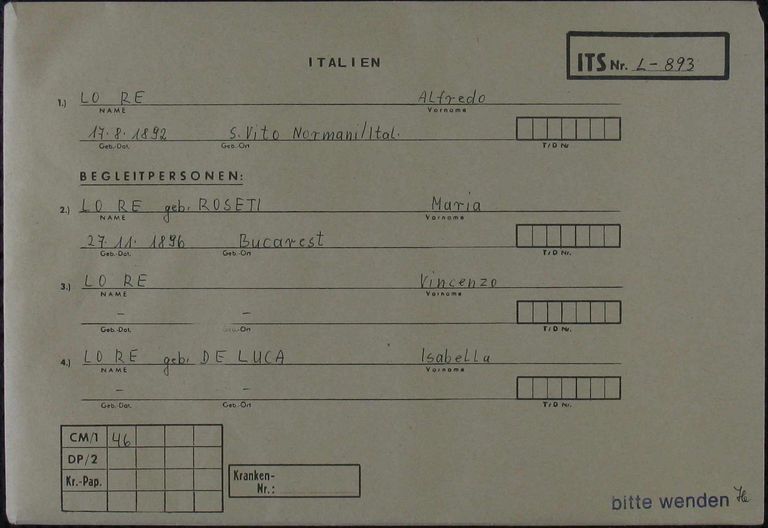Page of
Page/
- Reference
- Intro


Once the IRO had been dissolved, hundreds of thousands of files arrived at the International Tracing Service (ITS) that had been created by IRO employees in the context of the Care and Maintenance program. These files included the CM/1 applications that were used in order to apply for DP status, various other documents, and correspondence. At the beginning of the 1960s, the files were packed in envelopes at the ITS. Thus, the CM/1 envelopes and the information on them do not come from the IRO, but from the ITS.
Once the IRO had been dissolved, hundreds of thousands of files arrived at the International Tracing Service (ITS) that had been created by IRO employees in the context of the Care and Maintenance program. These files included the CM/1 applications that were used in order to apply for DP status, various other documents, and correspondence. At the beginning of the 1960s, the files were packed in envelopes at the ITS. Thus, the CM/1 envelopes and the information on them do not come from the IRO, but from the ITS.
Questions and answers
-
Where was the document used and who created it?
Employees of the International Tracing Service (ITS), the predecessor organization to the Arolsen Archives, created the CM/1 envelopes to hold the files of the Care and Maintenance program. They prepared an envelope for each CM/1 file under the name of the main applicant (“head of family”).
- When was the document used?
ITS employees started to fill the CM/1 envelopes at the beginning of the 1960s. The envelopes that date from this period are still used at the Arolsen Archives to store the documents to this day.
- What was the document used for?
When you look at the digital collections of the IRO Care and Maintenance program in the online archive of the Arolsen Archives or on site, the scan of the CM/1 envelope is the first thing you encounter. ITS employees introduced these envelopes so that all of the materials pertaining to an individual applicant could be collected together in one place. In addition to the CM/1 applications, they also contain other documents that were submitted by the applicants or issued by IRO employees. They also hold many of the earlier screening questionnaires which the Allies used in 1946 to review the status of the DPs in the camps. In addition, documents that the ITS received from refugee aid organizations in the 1950s were also filed in the envelopes.
A letter from the UN High Commissioner for Refugees (UNHCR) reveals how disorganized the CM/1 files were when they arrived at the ITS. ITS employees processed them during the years that followed, sorted them into the appropriate CM/1 envelopes, and filed them alphabetically by the last name of the main applicant (“head of family”). Any family members who were mentioned in the CM/1 applications were listed on the envelopes as Begleitpersonen (accompanying people). In doing so, they disrupted the original compilation of the files by removing original documents such as passports or birth certificates, and other correspondence too, while adding further documents at the same time. As a result, the contents of the CM/1 envelopes are no longer identical with the contents of the CM/1 files as they were at the beginning of the 1950s when the collections arrived in Arolsen.
- How common is the document?
There are 350,000 CM/1 envelopes in the Arolsen Archives. They are divided into five collections: Germany, Italy, Austria, Switzerland, and England. The only difference between the envelopes is the name of the country.
- What should be considered when working with the document?
The CM/1 envelopes are an aid that ITS employees created in order to be able to find documents more quickly. These envelopes were not created by the IRO in the postwar period.
If you have any additional information about the CM/1 envelopes, we would appreciate it very much if you could send your feedback to eguide@arolsen-archives.org. New findings can always be incorporated into the e-Guide and shared with everyone.
Help for documents
About the scan of this document <br> Markings on scan <br> Questions and answers about the document <br> More sample cards <br> Variants of the document



